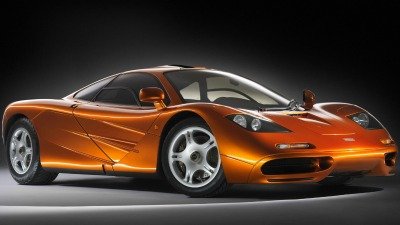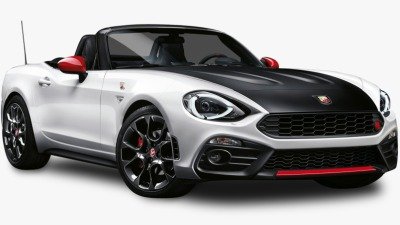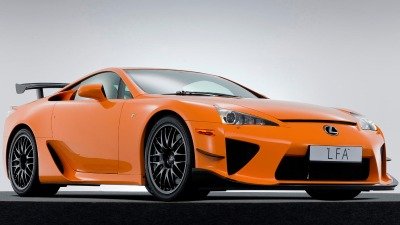McLaren F1
Rs 2.11
Expected Ex-Showroom Price
McLaren F1 Summary
The McLaren F1 is a supercar manufactured by the British brand and it is considered to be one of the rarest cars in the world. It features a 6.1L V12 engine that churns out 618 hp power and it comes linked to a 6-speed manual transmission. This supercar comes with a futuristic design and it features an F1-inspired forward-sited central driving seat. One of the prototypes of the F1 set the record for the world’s fastest production car in the late 90s.
McLaren F1 Key Specifications
| Engine Capacity | 6,064 cc |
| Power | 618 hp @ 7,400 rpm |
| Torque | 650 Nm @ 5,600 rpm |
| Mileage | 6.6 kmpl |
| Gearbox | 6-Speed Manual |
| Fuel Type | Petrol 95-98 RON |
| Seating Capacity | 2 |
McLaren F1 Price in India and Variants
| Variant | Expected Ex-Showroom Price without Tax |
|---|---|
| F1 | Rs 2.11 Crore |
| F1 GT | Not Available |
| F1 Le Mans | Not Available |
McLaren F1 Colours and Images
(Click Image to Enlarge)

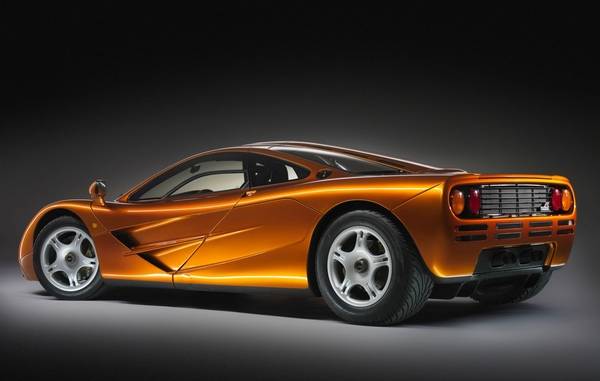
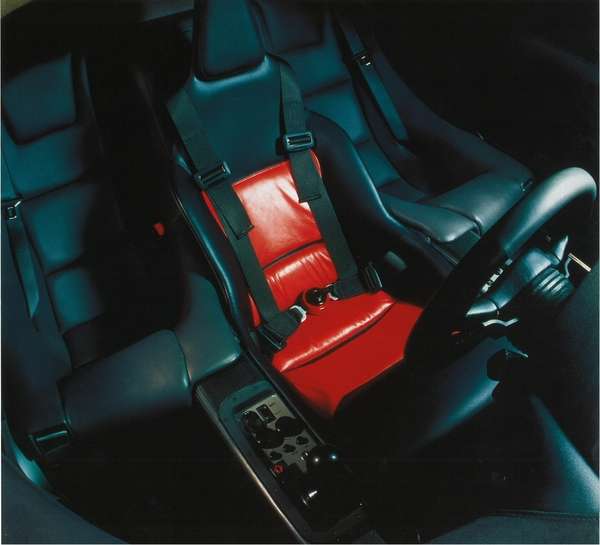
Key Features
- Four-Lamp High-Performance Headlight System
- Space Saving Dry Opening Dihedral Doors
- Full Underbody Fan Assisted Air-Management
- Advance Composite Monocoque Chassis
- Double Wishbone Front Suspension with Ground Plane Shear System Subframes
- Double Wishbone Rear Suspension with ISA Mounting System
- Ventilated Disc Brakes with Monobloc Light Alloy Calliper
- Automatic Brake and Balance Foil System
- Driver Adjustable Downforce Control
- 6.1L V12 Engine with Continuously Variable Inlet Valve Timing
- All Synchro Constant Mesh 6-Speed Gearbox
- Limited Slip Final Drive Differential
- AP Triple Plate Carbon Clutch
- TAG Electronics Engine Management System
- Service Accessible Electronic Data Logging
- Forward-Sited Central Driving Seat
- Two Off-Set Rear Passenger Seats
- Hand Crafted Interior in Conolly Soft Assisted Aniline Leather
- Courtesy Lights in All Compartments
- Race Bred Lightweight Magnesium Wheels
Pros and Cons
Pros
- Futuristic Design with Dihedral Doors
- Powerful V12 Engine
- Smooth Manual 6-Speed Gearbox
- Unique Centre Sited Driver Seat
- Lightweight Body Unit Made of Advanced Composites
- High-Performance Brakes with Monobloc Callipers
Cons
- Not in Production Anymore
- Extremely Rare
Similar Cars
McLaren F1 Overview
The McLaren F1 design is also inspired by prototype race cars but it looks very elegant due to its well-rounded & clean profile design. One of the most exciting design features of this supercar is its unique one-plus-two seating configuration. It comes with a central driving seat and two offset rear passenger seats which makes it the first 3-seater supercar. McLaren has used advanced carbon composites in its monocoque chassis and body structure construction. It also gets carbon side intrusion doors and sills along with integrated roof moulding. The McLaren F1 features double wishbone suspensions with GPSC mounting system at the front end and ISA mounting system at the rear end. It gets 332 mm ventilated discs with 4-pot monobloc calliper on the front wheels and 305 mm ventilated discs with 4-pot monobloc callipers on the rear wheels.
This supercar is powered by a BMW Motorsport sourced naturally-aspirated V12 engine. The McLaren F1 produces 618 hp of max power at 7,400 rpm and 650 Nm of max torque at 5,600 rpm. The chain drive DOHC engine comes with continuously variable inlet valve timing. It is mated to an all-synchro 6-speed gearbox unit with high-speed bevel gears and a spur final drive with a limited-slip differential. It comes with an AP triple plate carbon clutch with remote hydraulic actuation. The McLaren F1 has a top speed of 386 kmph which helped it hold the record for the world’s fastest car between 1992 to 2005. It accelerated from 0 to 97 kmph in just 3.2 seconds making it faster than modern-day supercars like Lamborghini Reventon.
McLaren F1 Price in India and Launch Date
The F1 was launched at a sticker price of $815,000 in 1992 making it one of the most expensive supercars of its time. McLaren F1 price in India would have been nearly Rs 2.11 Crore without any taxes if it was brought to the Indian shores after its launch. It’s been only 3 decades since it was launched and it has already established itself as one of the classiest supercars in history. The McLaren F1 is now selling at sky-high prices in auto auctions around the world. Recently an F1 was sold for a whopping $20.5 million in an auction which roughly translates to Rs 163 crores in Indian rupees.
Our Verdict on the McLaren F1
The F1 came with a very elegant and graceful design that distinguished it from other supercars. With a dry weight of only 1,018 and 618 horsepower on tap, the F1 delivered unbelievable performance figures. This supercar managed to keep the record of the world’s fastest production car for straight 12 years. The McLaren F1 was not just the best supercar of its time but it was also an engineering marvel of its decade.
McLaren F1 Specifications
Engine and Transmission
| Engine Type | V12 60-Degrees, DOHC, 48-Valves |
| Engine Displacement | 6,064 cc |
| No. of Cylinders | 12 |
| Valve Per Cylinder | 4 |
| Compression Ratio | 10.5:1 |
| Bore | 86.00 mm |
| Stroke | 87.00 mm |
| Fuel Supply | Safety Fuel Cell with In-Tank High-Pressure Pump |
| Ignition | Transistorized System with 12 Individual Coils |
| Cooling | Twin Water Radiators & Oil/Water Heat Exchanger |
| Emission Type | Not Rated |
| Transmission | 6-Speed, Manual |
| Clutch | AP Triple Plate Carbon |
| Drive Type |
Power, Mileage, and Top Speed
| Max Power | 618 hp @ 7,400 rpm |
| Max Torque | 650 Nm @ 5,600 rpm |
| Mileage | 6.6 kmpl |
| Top Speed | 386 kmph |
| Driving Range | 561 km (Estimated) |
Chassis, Steering, and Suspension
| Chassis | Carbon-Composite Monocoque Chassis |
| Body Type | Sports Car |
| Steering Type | Rack and Pinion |
| Steering Column | Rake Adjustable Steering Column |
| Turning Radius | 6.3 meters |
| Front Suspension | Double Wishbone with GPSC Subframes & Alloy Dampers |
| Rear Suspension | Double Wishbone with ISA Mounting System & Alloy Dampers |
Brakes, Wheels, and Tyres
| Front Brake Type | Ventilated Discs with 4-Pot Monoblock Callipers |
| Rear Brake Type | Ventilated Discs with 4-Pot Monoblock Callipers |
| Front Brake Size | 332 mm |
| Rear Brake Size | 305 mm |
| Wheel Type | Magnesium Wheels |
| Front Wheel Size | 17 Inch |
| Rear Wheel Size | 17 Inch |
| Tubeless Tyres | No |
| Front Tyre Size | 235/45 ZR17 |
| Rear Tyre Size | 315/45 ZR17 |
Dimensions, Weight, and Capacity
| Length | 4,288 mm |
| Width | 1,820 mm |
| Height | 1,140 mm |
| Wheelbase | 2,718 mm |
| Ground Clearance | 120 mm |
| Dry Weight | 1,018 kg |
| Fuel Tank Capacity | 85 litres |
| Seating Capacity | 3 |
| No. of Doors | 2 |
| Front Track | 1,568 mm |
| Rear Track | 1,472 mm |
Safety Features
| NCAP Rating | Not Rated |
| No. of Air Bags | No Airbags |
| Brake Assist | No |
| Automatic Brake and Balance Foil | Yes |
| Anti-Lock Braking System | No |
| Traction Control System | No |
| Electronic Stability Control | No |
| Electronic Brake Force Distribution | No |
| Tyre Pressure Monitor System | No |
| Hill Start Assist | No |
| Parking Assist | No |
| Parking Sensors | No |
| Parking Camera | No |
| Central Locking | Yes |
| Child Safety Door Locks | Yes |
| Seat Belt Alarm | No |
| Engine Immobilizer | Yes |
| Anti-Theft Alarm | Yes |
Exterior Features
| Headlight | Four Lamp Headlight System |
| Tail Light | Reflector Lamps |
| Fog Lights | Yes |
| Daytime Running Lights | No |
| Outside Rear View Mirror | Body Coloured |
| Front Wiper | Yes |
| Rear Wiper | No |
| Sunroof | No |
| Moonroof | No |
| Roof Rails | No |
Interior and Convenience Features
| Seat Type | One Plus Two Seating Configuration |
| Adjustable Driver Seat | Yes |
| Adjustable Passenger Seat | Yes |
| Adjustable Headrest | Yes |
| Heated Seats | No |
| Power Windows | Yes |
| Air Conditioner | Yes |
| Automatic Climate Control | No |
| Infotainment System | No |
| Audio System | 5 Speakers with KAC 622 Amplifier |
| Connectivity | USB |
| Keyless Entry | No |
| Push Button Start/Stop | Yes |
| Cruise Control | No |
| Driving Modes | No |
| Power Trunk Opener | No |
McLaren F1 FAQs
It held the record for the fastest car in production between 1992 to 2005.
It is an extremely rare supercar and only 64 road-going examples of this beast were ever made.
The F1 runs on 95-98 RON unleaded gasoline.
It has a top speed of 386 kmph and it accelerates from 0 to 97 kmph in just 3.2 seconds.
